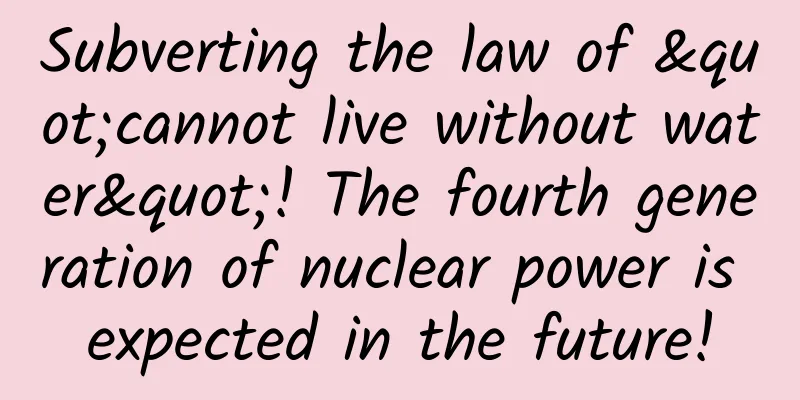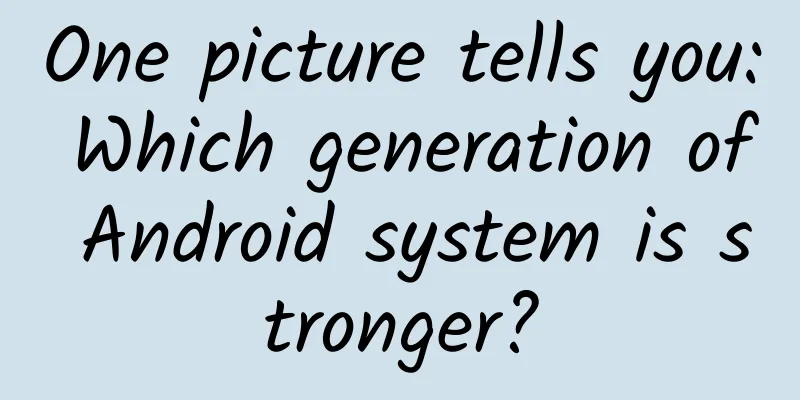Subverting the law of "cannot live without water"! The fourth generation of nuclear power is expected in the future!

|
Human development is inseparable from energy, and energy conservation and sustainability are also the goals of future energy development. One of the fourth-generation nuclear reactors in the research series is worth looking forward to. Its nuclear fuel is thorium instead of uranium, which is not only easy to mine, but also safer and more environmentally friendly. At present, about 60% of all nuclear power plants in the world use pressurized water reactor technology. Nuclear power plants rely on the fission of elements to release energy to generate electricity. Specifically, nuclear fuel continues to fission and generate heat through chain reactions, and water is used to take away the heat. The water is heated into steam, and the steam drives the steam turbine to generate electricity. At the same time, the water also plays a cooling role. This cycle continues to operate. However, in order to improve the power generation efficiency of the steam turbine, it is not cost-effective to lower the temperature. But water boils at 100°C under normal pressure, so pressurize the water to increase its boiling point. This is also the origin of the name of the pressurized water reactor. The high-pressure and high-radiation working environment has high requirements for materials. Under normal circumstances, there is no problem. The designers have considered many extreme situations and provided various countermeasures. However, no matter how good the design is, it cannot withstand the impact of natural disasters and man-made disasters. Human development is inseparable from energy. Now we are emphasizing energy conservation and emission reduction. In the foreseeable future, fossil energy will inevitably be eliminated. But who will take over? Nuclear energy is currently the most promising to take over this baton, but the previous nuclear reactors may not be enough. Among the current research series of the fourth-generation nuclear reactor, there is one that is worth looking forward to, and that is the thorium-based molten salt reactor TMSR. As we can see from the name, its nuclear fuel is thorium, not uranium, and it uses thorium fluoride as a coolant and fuel. Since thorium itself cannot achieve a chain reaction, neutrons are required to bombard thorium 232 to become uranium 233, and uranium 233 can undergo a chain reaction, and at the same time, it can continue to bombard thorium 232 as a neutron source to continue to proliferate it. Because the thorium fluoride in the molten salt state has a high temperature and a large heat capacity, the working efficiency is high. And it only needs to work under normal pressure. In addition, once a problem occurs, the temperature surge will directly melt the fuse at the bottom of the reactor, and the molten salt will flow out quickly. Due to the loss of the bombardment of the uranium 233 neutron source, thorium is still thorium, and it cannot continue the chain reaction. Once the temperature drops, the molten salt will solidify and wrap the entire core inside. There will be no situation like Fukushima where the core melts and water is needed to cool it down continuously, and finally a large amount of nuclear wastewater is produced. To put it in a figurative way, the former is a bit like removing the firewood from under the cauldron, while the latter can only stop the boiling by adding more water. It is obvious which one is more reliable and reasonable. At the same time, from the perspective of nuclear waste, the half-life of nuclear waste produced by thorium piles is shorter, from tens of thousands of years to five hundred years compared to uranium piles. After all, waste disposal also has costs. Not to mention that thorium is much cheaper than uranium in terms of reserves and difficulty of mining. From a safety perspective, uranium piles need to be built near water. As mentioned earlier, water is needed for cooling. Places near water are often developed areas with electricity shortages, but once an accident occurs, the harm is more serious. Thorium piles do not have this problem and are very suitable for promotion to underdeveloped and water-scarce areas. Of course, everything has its pros and cons. The design and manufacture of thorium piles are definitely more complicated and technically difficult. Otherwise, there wouldn't be uranium piles everywhere. Not to mention that uranium piles also have a byproduct - plutonium 239, the raw material for atomic bombs. This makes it easy to understand why the United States and the Soviet Union both chose it among many options. However, this also gives thorium piles another advantage. Exporting to underdeveloped countries does not have to worry about the proliferation of nuclear weapons, which truly makes people all over the world happy. |
<<: Do you believe it? Genes can "predict" a person's appearance
>>: One picture to understand: What should you do if a cyst is found during a physical examination?
Recommend
They are both iced coffee, why is cold brew more expensive than iced Americano?
In the hot summer, many people often drink a cup ...
Talk from 8 perspectives: Channel delivery methods based on user journey
The user journey refers to the entire process of ...
How should a new brand name itself?
“Words are finite, but their meanings are infinit...
Siri shortcuts and other features on iOS will also be moved to macOS
[[263433]] With the approach of macOS 10.15 and i...
Can the unused electricity be stored?
This summer, Sichuan has been experiencing contin...
Will QR codes be used up soon? Can genetic testing reveal your IQ? Which of these ten "scientific" rumors have you believed?
"QR codes will soon be used up", "...
The underlying logic of brand leveraging marketing!
Many brands are accustomed to using the marketing...
Build a user operation system in 5 steps!
User operation is an invisible skill that many ne...
Why are the hottest days during the "dog days" instead of the summer solstice?
We are lucky to live on the paradise of life - th...
618 sprint! How to increase brand transactions on Xiaohongshu?
The 618 promotion has entered the sprint period, ...
Tencent operations expert, maybe her 15 tips can help you
How to operate well? Before you start: Five prepa...
Typed yet flexible Table View Controller
[[163982]] UITableView is like bread and butter f...
After the traffic dividend disappears, how to play information flow advertising?
After the rapid development of mobile Internet in...
Zhuang Huijun's "Wave Pattern Elementary Course" Quick Introduction to Wave Theory
Zhuang Huijun's "Wave Pattern Elementary...
Douyin agent operation: interpretation of Douyin live broadcast gameplay
Nowadays, everyone has Douyin, and everyone can w...






![[Case] With the right copywriting, CTR increased 6.3 times!](/upload/images/67cc2d82a3db2.webp)


